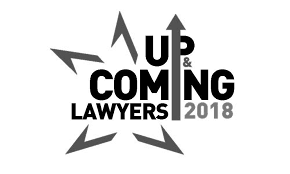“Most Workers Are Employees” Under The Fair Labor Standards Act
July 21, 2015 Category: Employment Law
On July 15, 2015, the Administrator for the Department of Labor (“DOL”), issued the “Administrator’s Interpretation No. 2015-1” (hereafter “Interpretation”) regarding “The Application of the Fair Labor Standards Act’s ‘Suffer or Permit’ Standard in the Identification of Employees Who Are Misclassified as Independent Contractors.” The Interpretation provides an overview of the problem of businesses’ misclassification of workers as independent contractors1 instead of employees.
The Interpretation echoes the DOL’s prior publication entitled “Misclassification of Employees as Independent Contractors,” wherein it noted that the “…misclassification of employees as independent contractors presents one of the most serious problems” affecting workers, employers and the country’s economy. The import of misclassification of a worker’s status is profound as the DOL noted workers who are misclassified “often are denied access to critical benefits and protection to which they are entitled…” Workers who are misclassified as independent contractors are deprived of minimum wage, overtime pay, unemployment insurance, family and medical leave act benefits and a safe work environment. In addition, the misclassification of employees leads to significant losses to federal and state government due to lower tax revenues, unemployment insurance and workers’ compensation funds. Per the DOL the misclassification of workers “…hurts taxpayers and undermines the economy.”
The Interpretation highlights the increased number of workers’ complaints lodged with the DOL alleging misclassification and the DOL’s enforcement actions related to the misclassification of workers. The Interpretation notes that “courts use the multi-factorial ‘economic realities’ test” for determining whether a worker is an employee or an independent contractor under the Fair Labor Standards Act (“FLSA”). The economic realities test “focuses on whether the worker is economically dependent on the employer or in business for him or herself.” The Administrator’s Interpretation indicates that “applying the economic realities test in view of the expansive definition of ’employ’ under the Act, most workers are employees under the FLSA.” (Emphasis added)
The Interpretation sets forth a comprehensive review of the legal precedent addressing the economic realities test and notes that these factors “should be applied in view of the FLSA’s broad scope of employment and the ‘suffer or permit’ standard.” (Emphasis added) These factors include:
- Whether the work performed is an integral part of the employer’s business;
- Whether the worker’s managerial skill affect his/her opportunity for profit or loss;
- Determining the worker’s relative investment compare to the employer’s investment;
- Does the worker perform work that requires special skill and initiative;
- Whether the worker’s relationship with the employer is permanent or indefinite; and
- What is the employer’s nature and degree of control over the worker.
Each factor noted in the Interpretation provides instructive examples.
The Interpretation states that the economic realities factors must be viewed in light of the FLSA’s expansive definition of employment and the intended scope of coverage for workers. Further, employers must not apply these factors in a “vacuum, and no single factor, including control, should be over-emphasized.” Rather, the focus should be on determining whether “the worker is in business for him or herself (and thus is an independent contractor) or is economically dependent on the employer (and thus is its employee).”
I urge all employers and workers to review the DOL’s Interpretation and seek legal counsel to ensure FLSA compliance.
1Workers are most often misclassified as independent contractors, but they are also misclassified as partners, owners or members of an LLC.
















